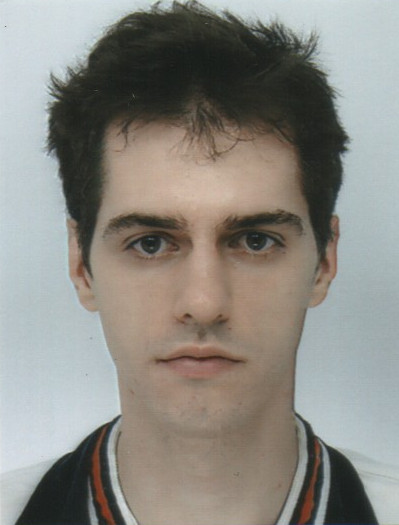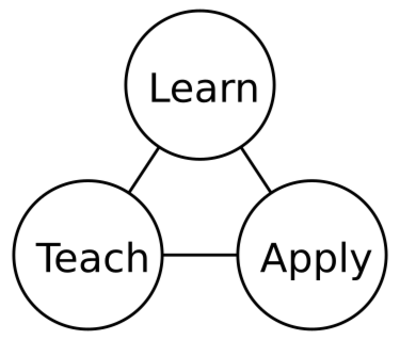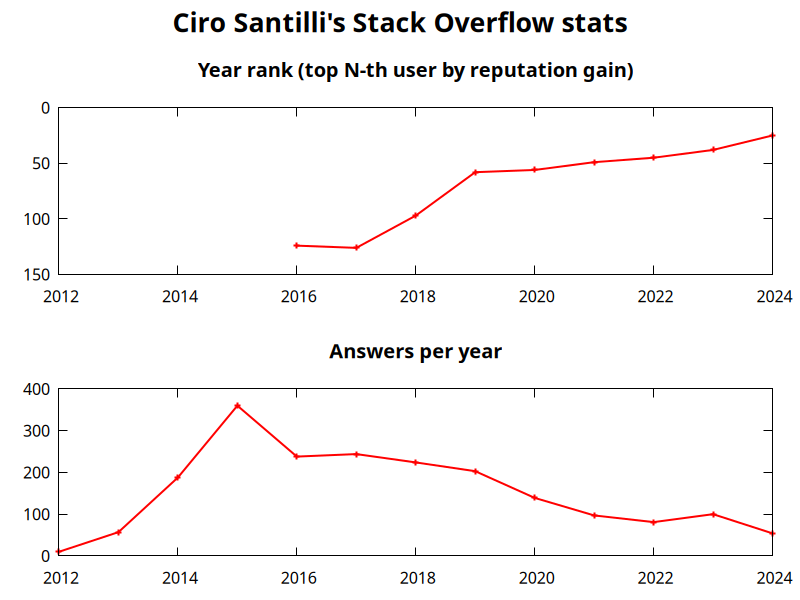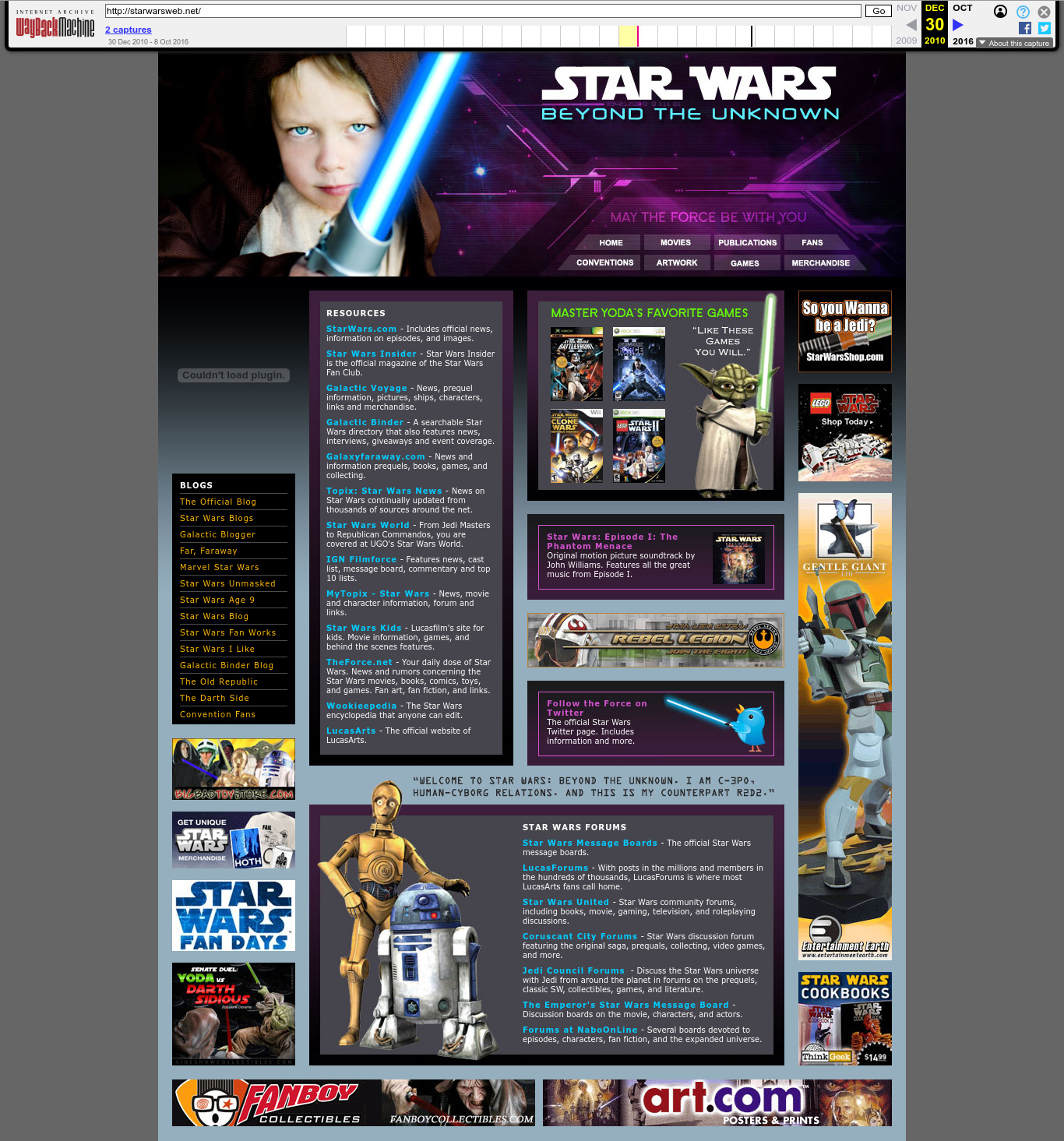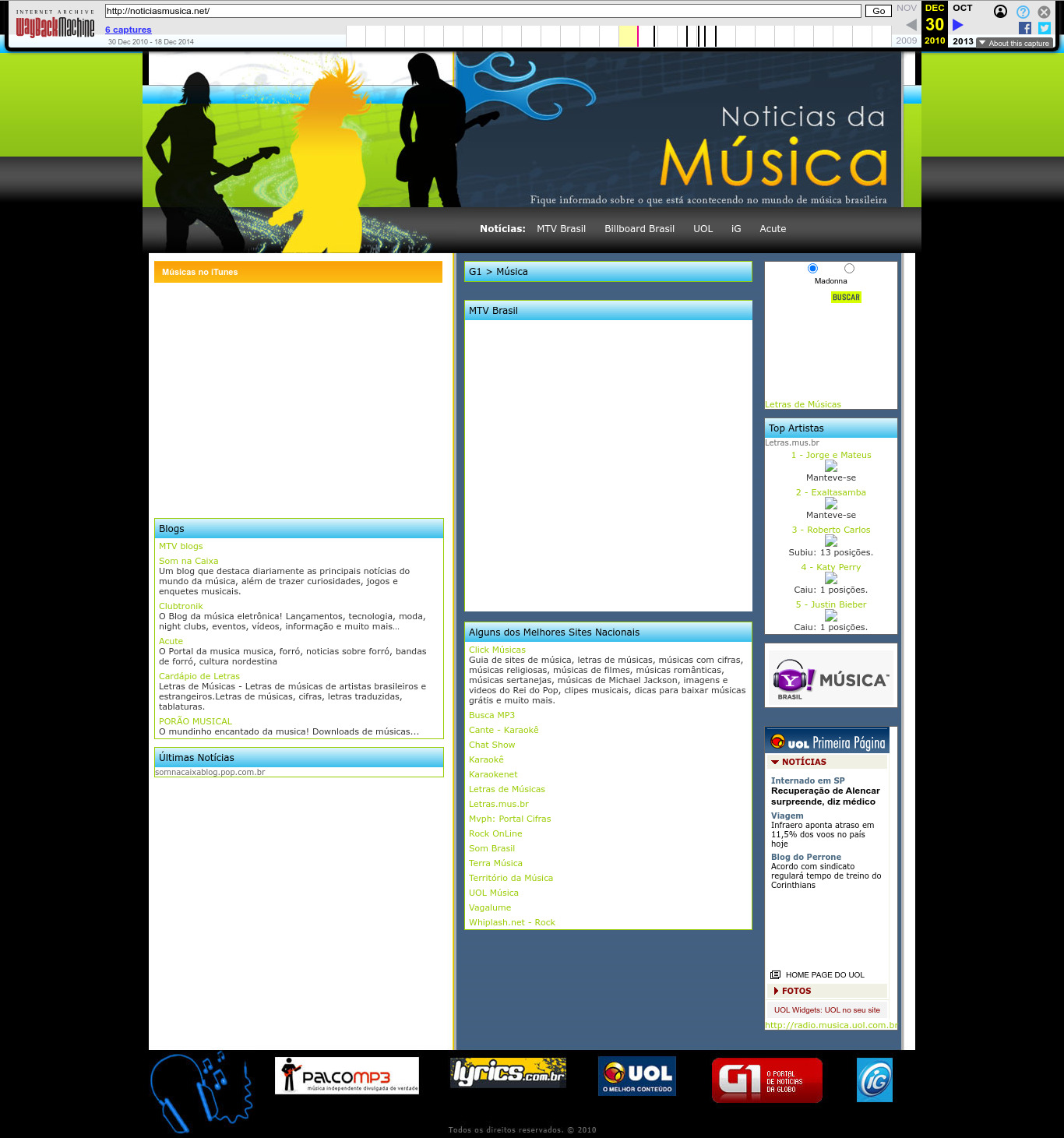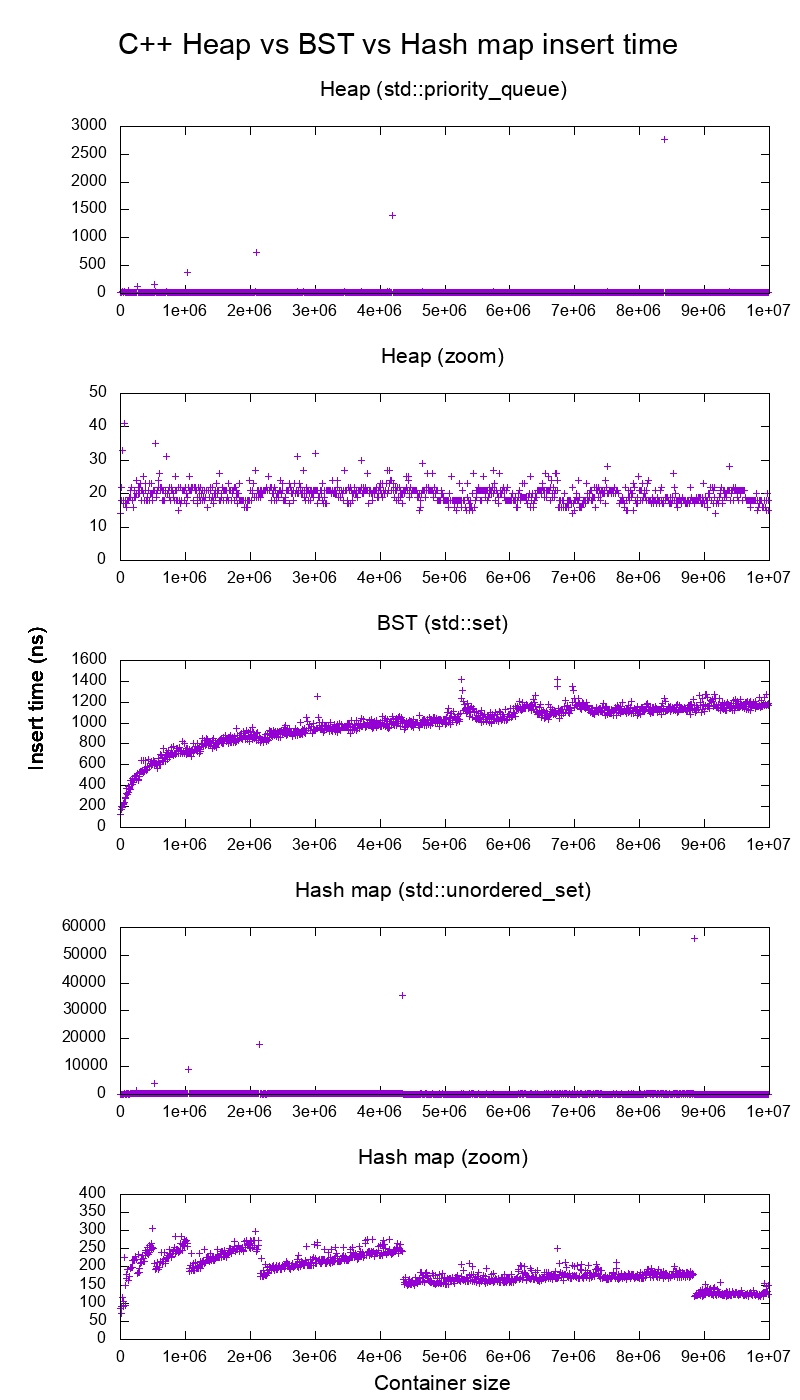Home Updated 2025-12-02
Check out: OurBigBook.com, the best way to publish your scientific knowledge. It's an open source note taking system that can publish from lightweight markup files in your computer both to a multi-user mind melding dynamic website, or as a static website. It's like Wikipedia + GitHub + Stack Overflow + Obsidian mashed up. Source code: github.com/ourbigbook/ourbigbook.
Sponsor me to work on this project. For 400k USD I will quit my job or not get a new job and work on OurBigBook full time for a second year to try and kickstart The Higher Education Revolution. Status: ~44k / 400k USD. At 4M USD I retire/tenure and work on open STEM forever. How to donate: Section "Sponsor Ciro Santilli's work on OurBigBook.com".
I first quit my job 1st June 2024 to work on the project for 1 year after I reached my initial 100k goal mostly via a 1000 Monero donation. For a second follow up year, I increased my requirement to 400k USD to give me more peace of mind as I'm destroying my career in the process. A second year greatly improve chances of success: on year one I improved my tech, on year two I want to come guns blazing to solve courses and get users.
Mission: to live in a world where you can learn university-level mathematics, physics, chemistry, biology and engineering from perfect free open source books that anyone can write to get famous. More rationale: Section "OurBigBook.com"
Explaining things is my superpower, e.g. I was top user #39 on Stack Overflow in 2023[ref][ref] and I have a few 1k+ star educational GitHub repositories[ref][ref][ref][ref]. Now I want to bring that level of awesomeness to masters level Mathematics and Physics. But I can't do it alone! So I created OurBigBook.com to allow everyone to work together towards the perfect book of everything.
My life's goal is to bring hardcore university-level STEM open educational content to all ages. Sponsor me at github.com/sponsors/cirosantilli starting from 1$/month so I can work full time on it. Further information: Section "Sponsor Ciro Santilli's work on OurBigBook.com". Achieving what I call "free gifted education" is my Nirvana.
This website is written in OurBigBook Markup, and it is published on both cirosantilli.com (static website) and outbigbook.om/cirosantilli (multi-user OurBigBook Web instance). Its source code is located at: github.com/cirosantilli/cirosantilli.github.io and also at
cirosantilli.com/_dir and it is licensed under CC BY-SA 4.0 unless otherwise noted.To contact Ciro, see: Section "How to contact Ciro Santilli". He likes to talk with random people of the Internet.
GitHub | Stack Overflow | LinkedIn | YouTube | Twitter | Wikipedia | Zhihu 知乎 | Weibo 微博 | Other accounts
Besides that, I'm also a freedom of speech slacktivist and recreational cyclist. I like Chinese traditional music and classic Brazilian pop. Opinions are my own, but they could be yours too. Tax the rich.
Let's create an educational system with:
- no distinction between university and high school, students just go as fast as they can to what they really want without stupid university entry exams
- fully open source learning material
- on-demand examinations that anyone can easily take without prerequisites
- granular entry selection only for space in specific laboratories or participation in specific novel research projects
I offer:
- online private tutoring for:
- any STEM university course
- passionate younger STEM students (any age) who want to learn university level material and beyond. Can your kid be the next Fields Medalist or Nobel Prize winner? I'm here to help, especially if you are filthy rich! I focus moving students forward as fast as they want on and on producing useful novel tutorials and results
Let your child be my Emile, and me be their Adolfo Amidei, and let's see how far they can go! I will help take your child:and achieve their ambitious STEM goals!- into the best universities
- into the best PhD programs
- educational consulting for institutions looking to improve their STEM courses
- do you know that course or teacher that consistently gets bad reviews every year? I'll work with the teacher to turn the problem around!
- are you looking to create a consistent open educational resources offering to increase your institutions internationally visibility? I can help with that too.
My approach is to:For minors, parents are welcome to join video calls, and all interactions with the student will be recorded and made available to parents.
- propose interesting research projects. The starting point is always deciding the end goal: Section "Backward design"
- learn what is needed to do the project together with the student(s)
- publish any novel results or tutorials/tools produced freely licensed online, and encourage the student to do the same (Section "Let students learn by teaching", digital garden)
I have a proven track of explaining complex concepts in an interesting and useful way. I work for the learner. Teaching statement at: Section "How to teach". Pricing to be discussed. Contact details at: Section "How to contact Ciro Santilli".
I am particularly excited about pointing people to the potential next big things, my top picks these days are:I am also generally interested in:
- quantum computing
- AGI research, in particular AI code generation, automated theorem proving and robotics
- assorted molecular biology technologies
- 20th century physics, notably AMO and condensed matter
- the history of science, and in particular trying to look at seminal papers of a field
Ciro Santilli's amazing Stack Overflow profile
. Ciro contributes almost exclusively by answering question he Googles into out of his own need, and never by refreshing the newest question of big tags for low hanging fruit! More information at: Section "Ciro Santilli's Stack Overflow contributions".Ciro Santilli's Stack Overflow stats
. Further methodology details at: Figure "Ciro Santilli's Stack Overflow stats".The problem with education by Ciro Santilli
. Source. In this video Ciro Santilli exposes his fundamental philosophy regarding why Education is broken. This philosophy was the key motivation behind the failed OurBigBook Project.OurBigBook Web topics demo
. Source. The OurBigBook topic feature allows users to "merge their minds" in a "sort by upvote"-stack overflow-like manner for each subject. This is the killer feature of OurBigBook Web. More information at: docs.ourbigbook.com/ourbigbook-web-topics.OurBigBook dynamic article tree demo
. Source. The OurBigBook dynamic tree feature allows any of your headers to be the toplevel h1 header of a page, while still displaying its descendants. SEO loves this, and it also allows users to always get their content on the correct granularity. More information at: docs.ourbigbook.com/ourbigbook-web-dynamic-article-tree.OurBigBook local editing and publishing demo
. Source. With OurBigBook you can store your content as plaintext files in a Lightweight markup, and then publish that to either OurBigBook.com to get awesome multi-user features, or as a static website where you are in full control. More information at: docs.ourbigbook.com/publish-your-content.Top Down 2D continuous game with Urho3D C++ SDL and Box2D for Reinforcement learning by Ciro Santilli (2018)
Source. More information: Section "Ciro's 2D reinforcement learning games". This is Ciro's underwhelming stab at the fundamental question: Can AGI be trained in simulations?. This project could be taken much further.Water Margin tribute to Chinese dissidents by Ciro Santilli (2022)
Source. Part of Ciro Santilli's campaign for freedom of speech in China, see also: cirosantilli.com/china-dictatorship/water-margin.Lenovo ThinkPad T430 running a BIOS hello world
. This uses Ciro Santilli's project x86 bare metal examples with source code at: github.com/cirosantilli/x86-bare-metal-examplesLinux Kernel Module Cheat presentation
. Source. This project, with source code at: github.com/cirosantilli/linux-kernel-module-cheat, aims to be the perfect emulation setup to study and develop the Linux kernel, kernel modules, QEMU, gem5 as well as x86_64, ARM userland and baremetal assembly and more.My Bitcoin inscription museum by Ciro Santilli
. Source. Introductory video to Section "Cool data embedded in the Bitcoin blockchain". -------------------------------------
| Force of Will 3 U U |
| --------------------------------- |
| | //////////// | |
| | ////() ()\////\ | |
| | ///_\ (--) \///\ | |
| | ) //// \_____///\\ | |
| | ) \ / / / / | |
| | ) / \ | | / _/ | |
| | ) \ ( ( / / / / \ | |
| | / ) ( ) / ( )/( ) \ | |
| | \(_)/(_)/ /UUUU \ \\\/ | | |
| .---------------------------------. |
| Interrupt |
| ,---------------------------------, |
| | You may pay 1 life and remove a | |
| | blue card in your hand from the | |
| | game instead of paying Force of | |
| | Will's casting cost. Effects | |
| | that prevent or redirect damage | |
| | cannot be used to counter this | |
| | loss of life. | |
| | Counter target spell. | |
| `---------------------------------` |
| l
| Illus. Terese Nelsen |
-------------------------------------Code 1.
ASCII art of a Force of Will Magic: The Gathering card inscribed in the Bitcoin blockchain
. Artist unknown, uploaded December 2014. Part of Section "Cool data embedded in the Bitcoin blockchain" where Ciro Santilli maintains a curated list of such interesting inscriptions.
This was a small project done by Ciro for artistic purposes that received some attention due to the incredible hype surrounding cryptocurrencies at the time. Ciro Santilli's views on cryptocurrencies are summarized at: Section "Are cryptocurrencies useful?".
YellowRobot.jpgJPG image fully embedded in the Bitcoin blockchain depicting some kind of cut material art depicting a yellow robot, inscribed on January 29, 2017.
Ciro Santilli found this image and others during his research for Section "Cool data embedded in the Bitcoin blockchain" by searching for image fingerprints on every transaction payload of the blockchain with a script.
The image was uploaded by EMBII, co-creator of the AtomSea & EMBII upload mechanism, which was responsible for a large part of the image inscriptions in the Bitcoin blockchain.
The associated message reads:This is one of Ciro Santilli's favorite AtomSea & EMBII uploads, as it perfectly encapsules the "medium as an art form" approach to blockchain art, where even non-novel works can be recontextualized into something interesting, here depicting an opposition between the ephemeral and the immutable.
Chiharu [EMBII's Japanese wife] and I found this little yellow robot while exploring Chicago. It will be covered by tar or eventually removed but this tribute will remain. N 41.880778 E -87.629210
2010 Wayback Machine archive of starwarsweb.net
. This website was used as one of the CIA 2010 covert communication websites, a covert system the CIA used to communicate with its assets. More details at: Section "CIA 2010 covert communication websites".
Ciro Santilli had some naughty OSINT fun finding some of the websites of this defunct network in 2023 after he heard about the 2022 Reuters report on the matter, which for the first time gave away 7 concrete websites out of a claimed 885 total found. As of November 2023, Ciro had found about 350 of them.
2010 Wayback Machine archive of noticiasmusica.net
. This is another website that was used as one of the CIA 2010 covert communication websites. This website is written in Brazilian Portuguese, and therefore suggests that the CIA had assets in Brazil at the time, and thus was spying on a "fellow democracy".
Although Snowden's revelations made it extremely obvious to the world that the USA spies upon everyone outside of the Five Eyes, including fellow democracies, it is rare to have such a direct a concrete proof of it visible live right on the Wayback Machine. Other targeted democracies include France, Germany, Italy and Spain. More details at: USA spying on its own allies.
This investigative report by Ciro Santilli was featured on the Daily Mail after 404 Media reported on it in 2025.
Diagram of the fundamental theorem on homomorphisms by Ciro Santilli (2020)
Shows the relationship between group homomorphisms and normal subgroups.
Used in the Stack Exchange answer to What is the intuition behind normal subgroups? One of Section "The best articles by Ciro Santilli".
Spacetime diagram illustrating how faster-than-light travel implies time travel by Ciro Santilli (2021)
Used in the Stack Exchange answer to Does faster than light travel imply travelling back in time?. One of Section "The best articles by Ciro Santilli".Average insertion time into heaps, binary search tree and hash maps of the C++ standard library by Ciro Santilli (2015)
Source. Used in the Stack Overflow answer to Heap vs Binary Search Tree (BST). One of Section "The best articles by Ciro Santilli".Birch and Swinnerton-Dyer conjecture in two minutes by Ciro Santilli
. Source. Quick and direct explanation of the statement of the BSD conjecture for people who know basic university mathematics. This is one of the Millennium Prize Problems, and you will get a million dollars if you can solve it! This therefore falls in the Simple to state but hard to prove of Ciro Santilli's the beauty of mathematics aesthetics.Top view of an open Oxford Nanopore MinION
. Source. This is Ciro Santilli's hand on the Wikipedia article: en.wikipedia.org/wiki/Oxford_Nanopore_Technologies. He put it there after working a bit on Section "How to use an Oxford Nanopore MinION to extract DNA from river water and determine which bacteria live in it" :-) And he would love to document more experiments like that one Section "Videos of all key physics experiments", but opportunities are extremely rare.A quick 2D continuous AI game prototype for reinforcement learning written in Matter.js, you can view it on a separate page at cirosantilli.com/_raw/js/matterjs/examples.html#top-down-asdw-fixed-viewport. This is a for-fun-only prototype for Ciro's 2D reinforcement learning games, C++ or maybe Python (for the deep learning ecosystem) seems inevitable for a serious version of such a project. But it is cute how much you can do with a few lines of Matter.js!
HTML snippet:
<iframe src="_raw/js/matterjs/examples.html#top-down-asdw-fixed-viewport" width="1000" height="850"></iframe> Assembly language Updated 2025-07-16
Buildroot Updated 2025-07-16
The basis for Linux Kernel Module Cheat.
Ciro Santilli's documentation superpowers Updated 2025-07-16
Ciro Santilli has the power to document stuff in a way that makes using them awesome, as evidenced by his his Stack Overflow contributions (notably those in the best articles by Ciro Articles), and other online contributions.
If your project does something awesome, hiring Ciro means that more people will be able to notice that it is actually awesome, and use it.
He likes to do this in parallel to contributing new features, quickly switching between his "developer" and "technical documentor" hats.
This means of course that he will develop new features a bit slower than others, but he feel it is more valuable if end users can actually use your project in the first place.
His technique is to provide upfront extremely interactive and reproducible getting started setups that immediately show the key value of the project to users.
He backs those setups with:A prime example of kind of setup is Ciro's Linux Kernel Module Cheat.
- scripts that automate the setup much as possible to make things enjoyable and reproducible
- a detailed description of the environment in which he tested: which OS, version of key software, etc.
- a detailed description of what is expected to happen when you take an action, including known bugs with links to bug reports
- theory and rationale on the sections after the initial getting started, but always finely interspersed with concrete examples
- all docs contained in a Git-tracked repo, with the ability to render to a single HTML with one TOC
- short sentences and paragraphs, interspersed with many headers, lists and code blocks
While he create this setup, he inevitably start to notice and fix:
- bugs
- annoyances on the public interface of the project
- the devs were using 50 different local scripts to do similar things, all of them semi-broken and limited. Every new hire was copying one of those local scripts, and hacking it up further.
- your crappy build / test / version control setup
Exploiting this skill, however, requires you to trust him.
When he tells to managers that he's good at documenting, they always say: great, we need better documentation! But then, one of the following may happen:
- managers forget that they wanted good documentation and just tell him to code new features as fast as possible
- they don't let him own the getting started page, but rather and expect him to try and fix the existing crappy unfixable existing getting started, without stepping on anyone's pride in the process >:-)Good documentation requires a large number of small iterative reviews, and detailed review of every line is not always feasible.Too many cooks.
Ciro's passion for documentation and tooling has the effect that if you have crappy documentation and tooling and don't want them to be fixed, Ciro will end up trying to fix those tools instead of doing what you tell him to do anyways, which might lead to him quitting because he can't stand the tools, or you firing him because he's not doing the job you think I should be doing. So please, don't bother hiring Ciro if you have crappy documentation and tooling.
Psychological analysis of why Ciro has this gift: How Ciro Santilli manages to write so much.
Ciro often has the following metaphor in his mind:
New discoveries are like very rough trails where you have to cut through heavy bushes (an original research paper).After a brave explorer goes through this rough path for the first time and charts it, it does become much easier for others to follow it later on, but it still requires a lot of effort to go through them, because there are still a lot of rough bushes and some parts of the map are not very clear (reading and reproducing the research paper to further advance the state of the art).As enough people start going through, the probability that someone with a bad memory ends up walking it increases, and that person ends up pounding the earth into a beaten track and increasing the trail clearance of the beginning of the trail at least (review paper).There finally comes a point when even the local government starts to notice this trail is important, and pays someone to add some stone pavement and rails on the most exposed parts of the trail (post and undergrad education).And at last, Ciro Santilli comes with a bulldozer and creates an autoroute that thousands of people can cruise at high speed without any effort (Q&A, open knowledge HTML websites).
Ciro's documenation obsession is partly part of his braindumping effort of dumping his brain into text form, which he has been doing through Ciro Santilli's website.
Ciro Santilli's hardware Computers Updated 2025-07-16
Machines used extensively while developing the Linux Kernel Module Cheat will be documented there for reference performance.
Computer security Updated 2025-07-16
As mentioned at Section "Computer security researcher", Ciro Santilli really tends to like people from this area.
Also, the type of programming Ciro used to do, systems programming, is particularly useful to security researchers, e.g. Linux Kernel Module Cheat.
Emulator Updated 2025-07-16
One of the things Ciro Santilli really likes, see: Linux Kernel Module Cheat.
test_executables.js Updated 2025-07-16
Ciro Santilli has been writing scripts of that type for a long time in order to test his programming self-learning setups with asserts.
The most advanced of those being the test system of Linux Kernel Module Cheat.
High flying bird vs gophers Updated 2025-07-16
Ciro once read that there are two types of mathematicians/scientists (he thinks it was comparing Einstein to some Jack of all trades polymath who didn't do any new discoveries):
- high flying birds, who know a bit of everything, feel the beauty of each field, but never dig deep in any of them
- gophers, who dig all the way down, on a single subject, until they either get the Nobel Prize, or work on the wrong problem and waste their lives
TODO long after Ciro forgot where he had read this from originally, someone later pointed him to: www.ams.org/notices/200902/rtx090200212p.pdf Birds and Frogs by Freeman Dyson (2009), which is analogous but about Birds and Frogs. So did Ciro's memory play a trick on him, or is there also a variant; of this metaphor with a gopher?
Ciro is without a doubt the bird type. Perhaps the ultimate scientist is the one who can combine both aspects in the right amount?
Ciro gets bored of things very quickly.
Once he understands the general principles, if the thing is not the next big thing, Ciro considers himself satisfied without all the nitty gritty detail, and moves on to the next attempt.
In the field of mathematics for example, Ciro is generally content with understanding cool theorem statements. More generally, one of Ciro's desires is for example to understand the significance of each physics Nobel Prize.
This is also very clear for example after Ciro achieved Linux Kernel Module Cheat: he now had the perfect setup to learn all the Linux kernel shady details but at the same time after all those years he finally felt that "he could do it, so that was enough", and soon moved to other projects.
If Ciro had become a scientist, he would write the best review papers ever, just like in the current reality he writes amazing programming tutorials on Stack Overflow.
Ciro has in his mind an overly large list of subjects that "he feels he should know the basics of", and whenever he finds something in one of those topics that he does not know enough about, he uncontrollably learns it, even if it is not the most urgent thing to be done. Or at least he puts a mention on his "list of sources" about the subject. Maybe everyone is like that. But Ciro feels that he feels this urge particularly strongly. Correspondingly, if a subject is not in that list, Ciro ignores it without thinking twice.
Ciro believes that high flying birds are the type of people better suited for venture capital investment management: you know a bit of what is hot on several fields to enough depth to decide where to place your bets and how to guide them. But you don't have the patience to actually go deeply into any one of them and deal with each individual shit that comes up.
Cosmos: A Personal Voyage (1980) episode 1 mentions as quoted by the Wikipedia page for Eratosthenes:That's Ciro.
According to an entry in the Suda (a 10th-century encyclopedia), his critics scorned him, calling him beta (the second letter of the Greek alphabet) because he always came in second in all his endeavors.
How computers work? Updated 2025-07-16
A computer is a highly layered system, and so you have to decide which layers you are the most interested in studying.
Although the layer are somewhat independent, they also sometimes interact, and when that happens it usually hurts your brain. E.g., if compilers were perfect, no one optimizing software would have to know anything about microarchitecture. But if you want to go hardcore enough, you might have to learn some lower layer.
It must also be said that like in any industry, certain layers are hidden in commercial secrecy mysteries making it harder to actually learn them. In computing, the lower level you go, the more closed source things tend to become.
But as you climb down into the abyss of low level hardcoreness, don't forget that making usefulness is more important than being hardcore: Figure 1. "xkcd 378: Real Programmers".
First, the most important thing you should know about this subject: cirosantilli.com/linux-kernel-module-cheat/should-you-waste-your-life-with-systems-programming
Here's a summary from low-level to high-level:
- semiconductor physical implementation this level is of course the most closed, but it is fun to try and peek into it from any openings given by commercials and academia:
- photolithography, and notably photomask design
- register transfer level
- interactive Verilator fun: Is it possible to do interactive user input and output simulation in VHDL or Verilog?
- more importantly, and much harder/maybe impossible with open source, would be to try and set up a open source standard cell library and supporting software to obtain power, performance and area estimates
- Are there good open source standard cell libraries to learn IC synthesis with EDA tools? on Quora
- the most open source ones are some initiatives targeting FPGAs, e.g. symbiflow.github.io/, www.clifford.at/icestorm/
- qflow is an initiative targeting actual integrated circuits
- microarchitecture: a good way to play with this is to try and run some minimal userland examples on gem5 userland simulation with logging, e.g. see on the Linux Kernel Module Cheat:This should be done at the same time as books/website/courses that explain the microarchitecture basics.
- instruction set architecture: a good approach to learn this is to manually write some userland assembly with assertions as done in the Linux Kernel Module Cheat e.g. at:
- github.com/cirosantilli/linux-kernel-module-cheat/blob/9b6552ab6c66cb14d531eff903c4e78f3561e9ca/userland/arch/x86_64/add.S
- cirosantilli.com/linux-kernel-module-cheat/x86-userland-assembly
- learn a bit about calling conventions, e.g. by calling C standard library functions from assembly:
- you can also try and understand what some simple C programs compile to. Things can get a bit hard though when
-O3is used. Some cute examples:
- executable file format, notably executable and Linkable Format. Particularly important is to understand the basics of:
- address relocation: How do linkers and address relocation work?
- position independent code: What is the -fPIE option for position-independent executables in GCC and ld?
- how to observe which symbols are present in object files, e.g.:
- how C++ uses name mangling What is the effect of extern "C" in C++?
- how C++ template instantiation can help reduce link time and size: Explicit template instantiation - when is it used?
- operating system. There are two ways to approach this:
- learn about the Linux kernel Linux kernel. A good starting point is to learn about its main interfaces. This is well shown at Linux Kernel Module Cheat:
- system calls
- write some system calls in
- pure assembly:
- C GCC inline assembly:
- write some system calls in
- learn about kernel modules and their interfaces. Notably, learn about to demystify special files such
/dev/randomand so on: - learn how to do a minimal Linux kernel disk image/boot to userland hello world: What is the smallest possible Linux implementation?
- learn how to GDB Step debug the Linux kernel itself. Once you know this, you will feel that "given enough patience, I could understand anything that I wanted about the kernel", and you can then proceed to not learn almost anything about it and carry on with your life
- system calls
- write your own (mini-) OS, or study a minimal educational OS, e.g. as in:
- learn about the Linux kernel Linux kernel. A good starting point is to learn about its main interfaces. This is well shown at Linux Kernel Module Cheat:
- programming language
Linux Updated 2025-07-16
From a technical point of view, it can do anything that Microsoft Windows can. Except being forcefully installed on every non-MacOS 2019 computer you can buy.
Ciro Santilli's conversion to Linux happened around 2012, and was a central part of Ciro Santilli's Open Source Enlightenment, since it fundamentally enables the discovery and contribution to open source software. Because what awesome open source person would waste time porting their amazing projects to closed source OSes?
Linux should track glibc and POSIX command line utilities in-tree like BSD Operating System, otherwise people have no way to get the thing running in the first place without blobs or large out-of-tree scripts! Another enlightened soul who agrees.
Particularly interesting in the history of Linux is how it won out over the open competitors that were coming up in the time: MINIX (see the chat) and BSD Operating System that got legally bogged down at the critical growth moment.
You must watch this: truth Happens advertisement by Red Hat.
xkcd 619: Supported Features
. Source. This perfectly illustrates Linux development. First features that matter. Then useless features.Bill Gates vs Steve Jobs by Epic Rap Battles of History (2012)
Source. Just stop whatever you are doing, and watch this right now. "I'm on Linux, bitch, I thought you GNU". Fandom explanations. It is just a shame that the Bill Gates actor looks absolutely nothing like the real gates. Actually, the entire Gates/Jobs parts are good, but not genial. But the Linux one is. Linux insides Updated 2025-07-16
Documents the Linux kernel. Somewhat of a competitor to Linux Kernel Module Cheat, but more wordy and less automated.
Linux kernel Updated 2025-07-16
Molecular biology technologies Updated 2025-07-16
As of 2019, the silicon industry is ending, and molecular biology technology is one of the most promising and growing field of engineering.
Ciro Santilli is especially excited about DNA-related technologies, because DNA is the centerpiece of biology, and it is programmable.
First, during the 2000's, the cost of DNA sequencing fell to about 1000 USD per genome in the end of the 2010's: Figure 2. "Cost per genome vs Moore's law from 2000 to 2019", largely due to "Illumina's" technology.
The medical consequences of this revolution are still trickling down towards medical applications of 2019, inevitably, but somewhat slowly due to tight privacy control of medical records.
Ciro Santilli predicts that when the 100 dollar mark is reached, every person of the First world will have their genome sequenced, and then medical applications will be closer at hand than ever.
But even 100 dollars is not enough. Sequencing power is like computing power: humankind can never have enough. Sequencing is not a one per person thing. For example, as of 2019 tumors are already being sequenced to help understand and treat them, and scientists/doctors will sequence as many tumor cells as budget allows.
Then, in the 2010's, CRISPR/Cas9 gene editing started opening up the way to actually modifying the genome that we could now see through sequencing.
What's next?
Ciro believes that the next step in the revolution could be could be: de novo DNA synthesis.
This technology could be the key to the one of the ultimate dream of biologists: cheap programmable biology with push-button organism bootstrap!
Just imagine this: at the comfort of your own garage, you take some model organism of interest, maybe start humble with Escherichia coli. Then you modify its DNA to your liking, and upload it to a 3D printer sized machine on your workbench, which automatically synthesizes the DNA, and injects into a bootstrapped cell.
You then make experiments to check if the modified cell achieves your desired new properties, e.g. production of some protein, and if not reiterate, just like a software engineer.
Of course, even if we were able to do the bootstrap, the debugging process then becomes key, as visibility is the key limitation of biology, maybe we need other cheap technologies to come in at that point.
This a place point we see the beauty of evolution the brightest: evolution does not require observability. But it also implies that if your changes to the organism make it less fit, then your mutation will also likely be lost. This has to be one of the considerations done when designing your organism.
Other cool topic include:
- computational biology: simulations of cell metabolism, protein and small molecule, including computational protein folding and chemical reactions. This is basically the simulation part of omics.If we could only simulate those, we would basically "solve molecular biology". Just imagine, instead of experimenting for a hole year, the 2021 Nobel Prize in Physiology and Medicine could have been won from a few hours on a supercomputer to determine which protein had the desired properties, using just DNA sequencing as a starting point!
- microscopy: crystallography, cryoEM
- analytical chemistry: mass spectroscopy, single cell analysis (Single-cell RNA sequencing)
Ciro is sad that by the time he dies, humanity won't have understood the human brain, maybe not even a measly Escherichia coli... Heck, even key molecular biology events are not yet fully understood, see e.g. transcription regulation.
One of the most exciting aspects of molecular biology technologies is their relatively low entry cost, compared for example to other areas such as fusion energy and quantum computing.
One page to rule them all Updated 2025-07-16
It is true that one image is worth a thousand words, but unfortunately it is also true that one image takes up at least as much bytes as a thousand words!
Having one single page to rule them all is of course the ideal setup for a website, as you can Ctrl + F one ToC and quickly find what you want.
And, with Linux Kernel Module Cheat Ciro noticed that it is very hard to write so much intelligent prose that becomes larger than reasonable to load on a single webpage.
He then started using this technique for everything he writes, including this page and Chinese government.
However, if there are too many images on the page, the loading of the last images would take forever in case users want to view the last sections.
There are two solutions to that:
- be traditional and create separate web pages
- be bold and load images as they appear on the viewport: stackoverflow.com/questions/2321907/how-do-you-make-images-load-only-when-they-are-in-the-viewport/57389607#57389607Edit: OK, it was standardized with
loading=lazy, without need JavaScript!Now the last awesome thing would be a method that loads first images in viewport, then those below, and then those above, that would be the ultimate solution.This question comes close: stackoverflow.com/questions/7906348/change-loading-order-of-images-already-on-page
Ciro is still deciding between those two. The traditional approach works for sure but loses the one page to rule them all benefits.
The innovative approach will work for interactive viewing, but archive.org will fail to load the images for example, and there may be other unforseen consequences.
Wikimedia Commons is awesome and automatically converts and serves smaller versions of images, so always choose the smallest images size needed by the output document. Readers can then find the higher resolution versions by following the page source.
This also comes to mind: motherfuckingwebsite.com
zettelkasten.de/posts/overview/ from zettelkasten:
How many Zettelkästen should I have? The answer is, most likely, only one for the duration of your life. But there are exceptions to this rule.
QEMU Updated 2025-07-16
Great way to understand how operating systems work, which Ciro Santilli used extensively in his Linux Kernel Module Cheat.
Ciro Santilli has some good related articles listed under: Section "The best articles by Ciro Santilli".
